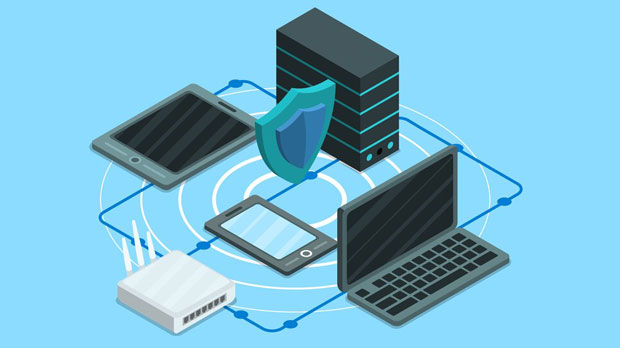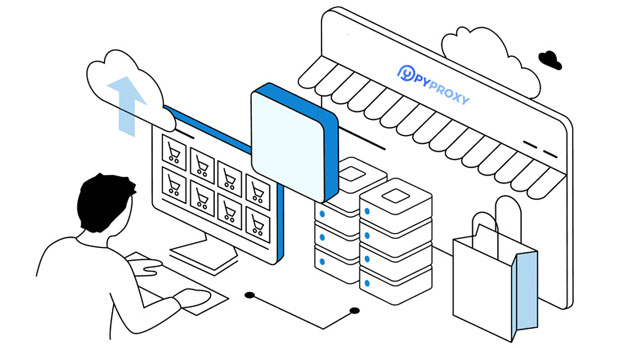When evaluating HTTP proxy services, the primary considerations often include speed, reliability, and security. In this article, we compare two popular proxy services, PYPROXY and Proxyscrape, focusing on their HTTP proxy performance. Both have made a mark in the world of proxy providers, but understanding which offers superior performance requires a detailed analysis. This comparison delves into various performance metrics to provide users with a clear insight into which service best meets their needs. Introduction to HTTP Proxy ServicesHTTP proxies act as intermediaries between a client and the web, forwarding requests from the client to the destination server and vice versa. These proxies are essential in scenarios where anonymity, security, or performance optimization is required. Both PyProxy and Proxyscrape have been designed to provide robust HTTP proxy services, but they differ in several critical aspects.Understanding PyProxy's HTTP Proxy PerformancePyProxy is known for its strong emphasis on privacy and reliability. The service offers users access to a wide range of proxy servers spread across multiple geographical locations, which can help in bypassing regional restrictions and enhancing browsing speeds. 1. Speed and Latency:PyProxy claims to provide high-speed proxies, optimized for both high-traffic websites and services requiring frequent requests. However, real-world performance may vary based on server load, geographic location, and network infrastructure. While PyProxy generally delivers faster speeds in regions with a high number of servers, users in remote areas may experience increased latency. The proxy service also provides multiple connection types, such as SOCKS5 and HTTPS, enhancing versatility.2. Reliability and Stability:One of the key strengths of PyProxy lies in its stability. Consistent uptime and reliable proxy servers are crucial for users relying on proxies for continuous scraping or other automated tasks. PyProxy also offers options for automatic IP rotation, ensuring that users don’t experience IP bans or throttling during prolonged usage.3. Security Features:PyProxy emphasizes secure browsing by offering HTTPS support, ensuring that data transmitted through its proxies is encrypted. However, while PyProxy offers strong security features, the service may not provide the same level of advanced security protocols as other specialized proxy providers.Understanding Proxyscrape's HTTP Proxy PerformanceProxyscrape is another proxy service that offers a diverse set of features, particularly appealing to users who require a large number of proxies for specific use cases such as web scraping and anonymous browsing. 1. Speed and Latency:Proxyscrape also offers high-performance HTTP proxies, particularly optimized for users in need of large-scale web scraping capabilities. While the speed is competitive with PyProxy, Proxyscrape provides a larger pool of rotating proxies, which can help mitigate the risks of being detected or banned. Users can access free proxies or opt for premium options with higher performance guarantees. However, performance can fluctuate depending on the geographic location of the server and the type of proxy being used.2. Reliability and Stability:Proxyscrape focuses on offering a high number of proxies that are continually updated. The reliability of these proxies varies, but the service boasts a large selection of proxies, which is ideal for users who need consistent IP addresses over extended periods. However, free proxies may suffer from poor reliability and occasional downtime, which may affect scraping or browsing activities.3. Security Features:While Proxyscrape offers an array of proxies, the security features it offers are not as robust as those provided by PyProxy. HTTPS support is available, but advanced encryption techniques are not the primary focus of Proxyscrape. This can be a significant downside for users seeking higher levels of security and privacy.Comparing PyProxy and Proxyscrape: Key Differences1. Speed Comparison:Both services offer relatively fast proxies, but the speed will depend on various factors, including the proximity of the proxy server and the specific task at hand. PyProxy's performance is generally more stable, while Proxyscrape offers a larger pool of proxies, which can reduce the risk of throttling and improve overall speed during peak demand times. 2. Latency and Server Locations:PyProxy tends to provide better performance in regions where it has a higher density of servers. On the other hand, Proxyscrape’s wide range of servers across different countries ensures that users from diverse geographic locations can experience optimized performance. However, Proxyscrape’s free proxies can sometimes lead to higher latency due to their less consistent quality.3. Reliability:Reliability is where PyProxy shines, especially for long-duration tasks. Proxyscrape, with its free proxy offerings, may experience more frequent downtime or less reliable connections. However, Proxyscrape’s paid plans offer enhanced stability and reliability, making it a viable option for high-demand users.4. Security Features:PyProxy takes the edge when it comes to security, offering HTTPS encryption as a default for all its proxies. Proxyscrape, although it offers HTTPS proxies, does not emphasize security to the same extent. Users requiring high levels of privacy and data protection may prefer PyProxy’s more robust security features.Cost Efficiency and Value1. Free vs. Paid Proxies:Proxyscrape offers a large selection of free proxies, which can be a great entry point for users with limited budgets. However, free proxies often come with trade-offs, such as limited reliability, higher latency, and the risk of being blacklisted. Paid options within Proxyscrape are more reliable but can be costlier than PyProxy's offerings.PyProxy, on the other hand, generally focuses on paid proxies, but its service quality justifies the cost for users seeking high performance, reliability, and security. For businesses or individuals who require proxies for large-scale tasks, PyProxy’s cost might be more justifiable due to its superior reliability and speed.Conclusion: Which is Better for HTTP Proxy Performance?Ultimately, the decision between PyProxy and Proxyscrape comes down to the specific needs of the user. If you prioritize speed, reliability, and strong security features, PyProxy is the better choice. Its paid proxies offer consistent performance, making it ideal for long-term and high-demand use cases.However, for users who need a large number of proxies and are working with a tight budget, Proxyscrape can be a viable option. Its free proxies may not always offer top-tier performance, but its premium proxies can deliver strong results. If you need to scale quickly and can manage fluctuations in performance, Proxyscrape is a solid alternative.In summary, both services have their strengths and weaknesses, and the choice ultimately depends on your budget, location, and specific proxy performance requirements.
Sep 09, 2025



































































